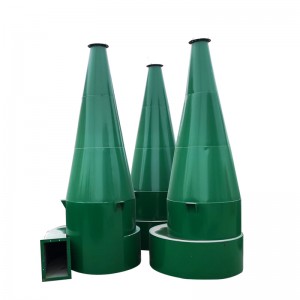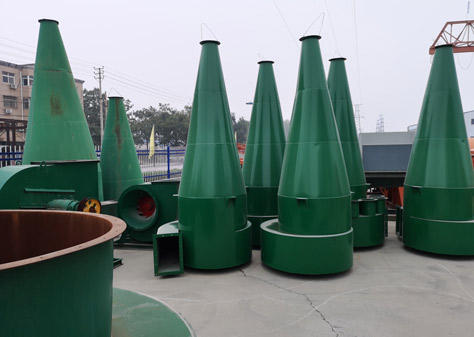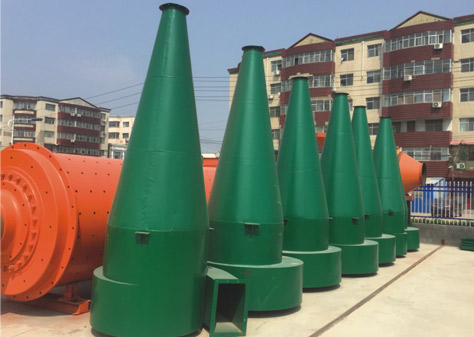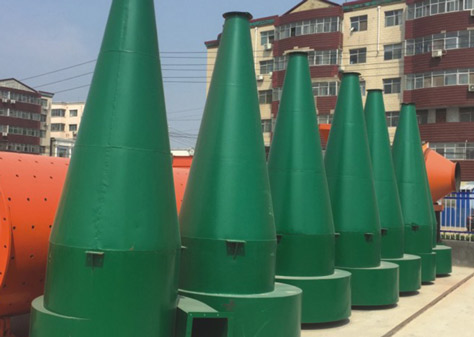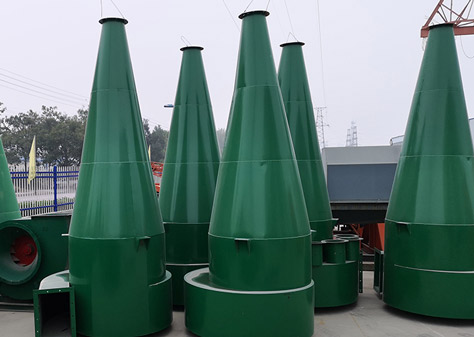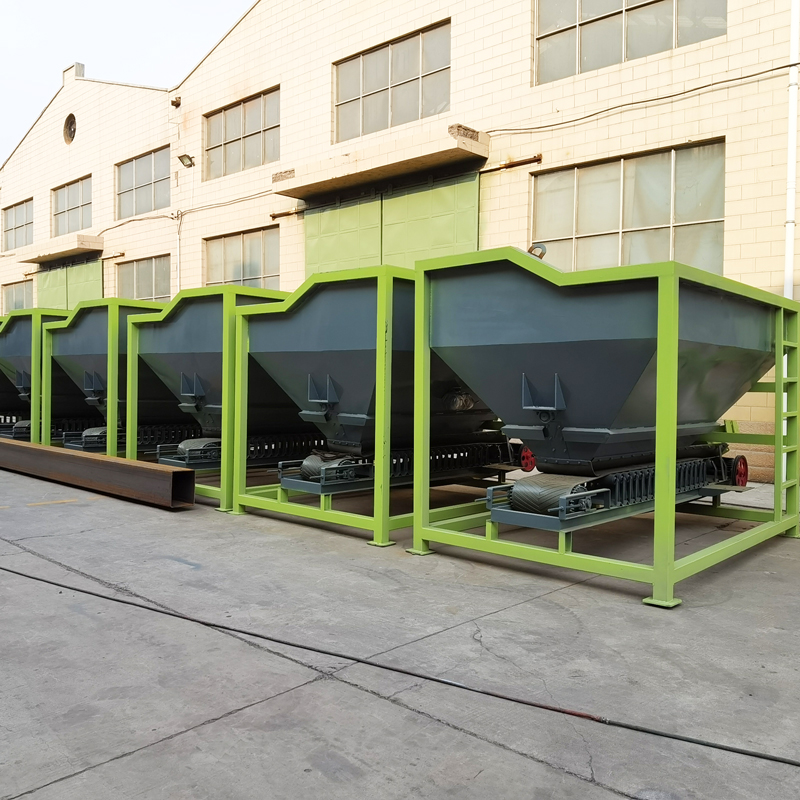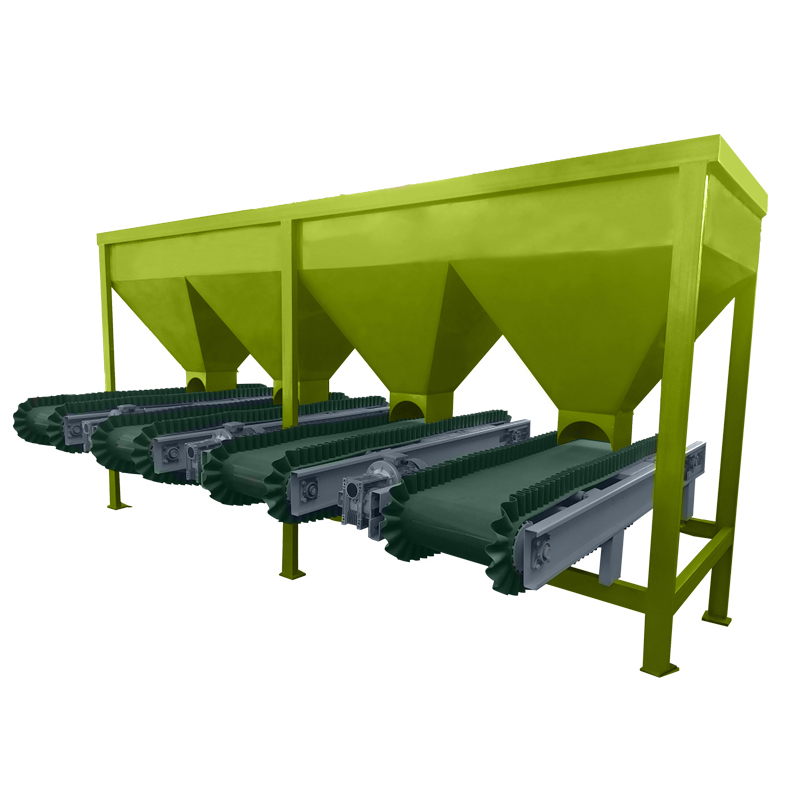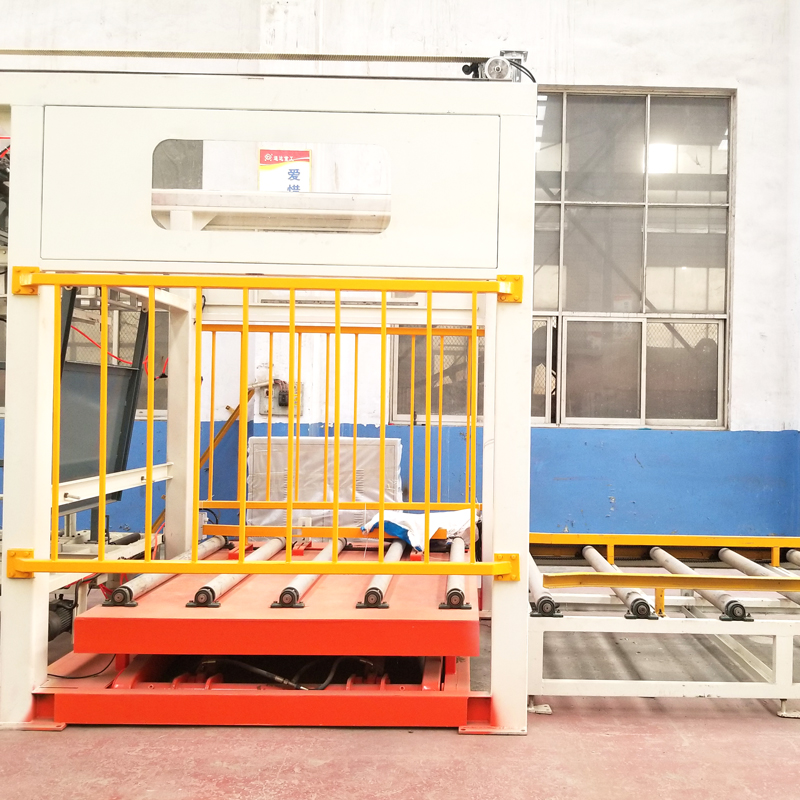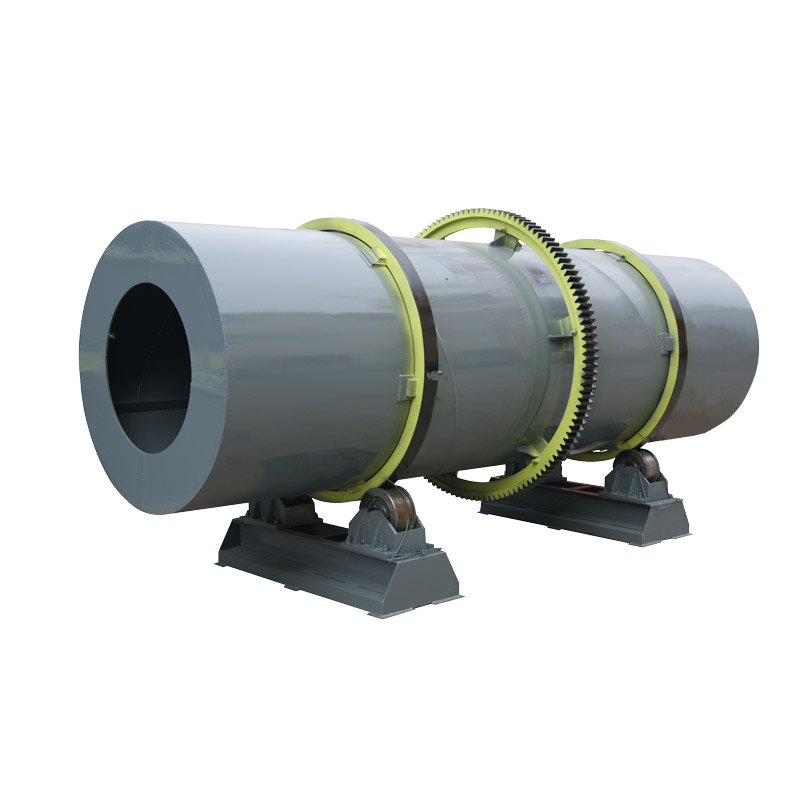
Product
Fertilizer Cyclone Dust Collector
PRODUCT DETAILS
The cyclone dust collector is the collection of dust caused by the fan in the drying and cooling process of organic manure and compound fertilizer.
|
Model |
Air Volume (m³/h) |
Equipment Resistance (Pa) |
Inlet Flow Speed (m/s) |
Overall Size (Block Diameter*Height) |
Weight (kg) |
|
XP-200 |
370-590 |
800-2160 |
14-22 |
Φ200*940 |
37 |
|
XP-300 |
840-1320 |
800-2160 |
14-22 |
Φ300*1360 |
54 |
|
XP-400 |
1500-2340 |
800-2160 |
14-22 |
Φ400*1780 |
85 |
|
XP-500 |
2340-3660 |
800-2160 |
14-22 |
Φ500*2200 |
132 |
|
XP-600 |
3370-5290 |
800-2160 |
14-22 |
Φ600*2620 |
183 |
|
XP-700 |
4600-7200 |
800-2160 |
14-22 |
Φ700*3030 |
252 |
|
XP-800 |
5950-9350 |
800-2160 |
14-22 |
Φ800*3450 |
325 |
|
XP-900 |
7650-11890 |
800-2160 |
14-22 |
Φ900*3870 |
400 |
|
XP-1000 |
9340-14630 |
800-2160 |
14-22 |
Φ1000*4280 |
500 |
- There are no moving parts inside the cyclone. Easy to maintain.
- When used as a pre-duster, it can be installed vertically and is easy to use.
- It can withstand high temperatures of 400 ° C. It can withstand higher temperatures if it is made of special high temperature resistant materials.
- After the wear-resistant lining is installed in the dust collector, it can be used to purify flue gas containing high abrasive dust.
- In the case of handling the same air volume, the volume is small, the structure is simple, and the price is low.
- When handling large air volumes, it is convenient to use multiple units in parallel, and the efficiency resistance is not affected.
- After the wear-resistant lining is installed in the dust collector, it can be used to purify flue gas containing high abrasive dust.
- Dry cleaning can help to recover valuable dust.
The cyclone is composed of an intake pipe, an exhaust pipe, a cylinder, a cone and a ash bucket. Cyclone dust collectors are simple in construction, easy to manufacture, install and maintain, and have low equipment investment and operating costs. They have been widely used to separate solid and liquid particles from gas streams or to separate solid particles from liquids. Under normal operating conditions, the centrifugal force acting on the particles is 5 to 2500 times that of gravity, so the efficiency of the cyclone is significantly higher than that of the gravity sedimentation chamber. Based on this principle, a cyclone dust removal device with a dust removal efficiency of more than 90% was successfully developed. In mechanical dust collectors, cyclone dust collectors are the most efficient. It is suitable for the removal of non-viscous and non-fibrous dust, mostly used to remove particles above 5μm. The parallel multi-tube cyclone device also has a dust removal efficiency of 80-85% for 3μm particles. Cyclone dust collectors constructed of special metal or ceramic materials resistant to high temperature, abrasion and corrosion can be operated at temperatures up to 1000° C and pressures up to 500 *105 Pa. From the aspects of technology and economy, the control range of cyclone dust collector pressure loss is generally 500-2000Pa. Therefore, it is a medium-efficiency dust collector and can be used for purifying high-temperature flue gas. It is a widely used dust collector and is widely used in boiler flue gas dust removal, multi-stage dust removal and pre-dust removal. Its main disadvantage is the low removal efficiency of fine dust particles (<5μm).






